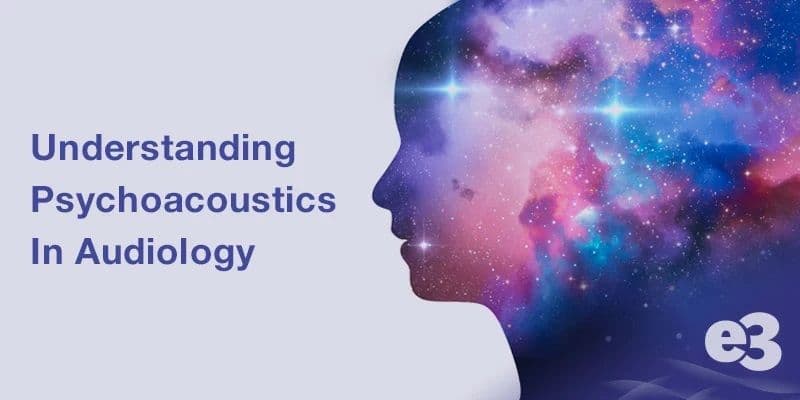Understanding Psychoacoustics In Audiology

Hearing is more complex than one would think. In layman’s terms, it involves how the brain perceives sounds. Perception is subjective but must be measured to accurately diagnose hearing loss and recommend treatment.
Auditory perception varies from person to person. In other words, the way one person interprets a sound can differ from how another person hears the same sound. That said, sound perception isn’t static — even for the same patient.
Age, hearing fatigue, or damage to the ear can influence auditory perception. Therefore, perception can change during a person’s lifetime. That’s why it’s important for audiologists to understand how a person perceives sound to make an accurate diagnosis and hearing device recommendation.
What Is Psychoacoustics?
Psychoacoustics is the psychological perception of sound. The science establishes relationships between measurable parameters such as sound pressure level, frequency, and ear anatomy and subjective auditory variables. These might include pitch, perceived volume, pleasantness of tone, and other qualities that are difficult to quantify.
Loudness, sharpness, tonality, and roughness are measures of a patient’s hearing perception. Each measures a single sound parameter such as level for roughness. Patients hear more than one factor at a time. All of these metrics must be combined to get a true picture of the way a patient’s ear perceives sound.
The Psychoacoustics Audiology Connection
Measuring a person’s perception of sound is important for an audiologist. An audiogram is a type of psychoacoustic test that helps an audiologist interpret speech test results, prescribe hearing aids, and help patients understand their communication issues. Audiograms are also vital for determining whether a patient has sensorineural or conductive hearing loss.
That’s important since people with sensorineural hearing loss also experience changes in the way sounds are interpreted by their ears. Patients may experience variable deficits in the representation of spectral, temporal, and binaural information. Some individuals with hearing loss continue to perceive sound in the same way as people with normal hearing, while others cannot represent a particular acoustic cue.
Psychoacoustic Tuning Curves
Audiograms are not good measures of how poor these deficits might be. The only way to determine how much perceptual degradation a patient has experienced is to measure it on a psychoacoustic tuning curve.
Interpreting psychoacoustic tuning curves in audiology is important for proper hearing aid recommendations. Even when many frequencies show a response on the audiogram, a much smaller set of actual cells may remain in the cochlea. These are the only cells that will respond to sound amplified through hearing aids.
Other clinical psychoacoustics tests include the following
The Stenger test is based on binaural lateralization and uses matched tuning forks to diagnose pseudohypacusis.
Temporal processing detects gaps in a stimulus that are strong indicators of central auditory dysfunction.
Duration pattern tests measure how well a patient can determine if sounds have different durations.
Audiometric Testing Equipment from e3
While there are other psychoacoustical tests available to audiologists, the audiogram is the gold standard. That’s why it’s important to have the best audiometric equipment available in your clinic or practice. e3 Diagnostics is the leading provider of audiology equipment sales and service solutions in the U.S. and stands ready to meet your needs.
With a wide selection of audiometers, ABR equipment, and other testing tools, we have the device you need. We also provide service for all your audiometry equipment — regardless of the brand.
For more information about our inventory or to inquire about a piece of equipment, get in touch with your local e3 office today!
Find Local Office
References
https://www.tandfonline.com/doi/abs/10.3109/00206097809080039?journalCode=iija19
https://www.audiologyonline.com/articles/20q-importance-psychoacoustics-in-clinical-27181
